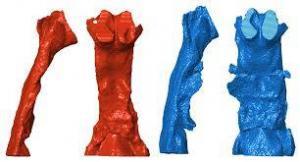What is the Best Sleep Apnea Dental Appliance?
Diagnosing Obstructive Sleep Apnea
The Tongue Tells much of the Story and literally the writing can be on-your-tongue.
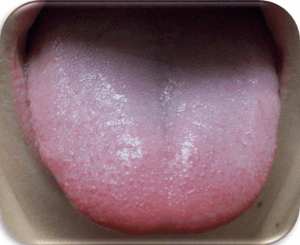
Normal Tongue:
- Smooth Borders
- Good Range of Tongue motion forward and side-to-side
- light red color
- Smooth and Soft; not lumpy and bumpy
- light glossy white coating
Tongue Indicative of Sleep Apnea
- rough scalloped borders
- brighter red and inflamed areas
- lumpy and bumpy or rough areas
Scalloping of the tongue is caused by the tongue being squished up against the teeth too hard. The Scalloping is due to the lower jaw being too small to house the teeth and tongue. The DNA Appliance is an orthopedic appliance capable of stimulating an increase in growth and size of the Jaws. The DNA Appliance will create more room for the tongue to fit properly in the mouth. If there is more room for the tongue in the mouth, it will not be squished back into the air. The best way to correct Obstructive Sleep Apnea is to literally correct the obstructions.
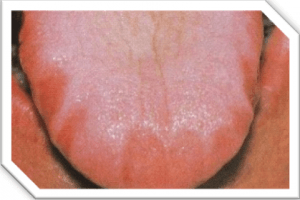
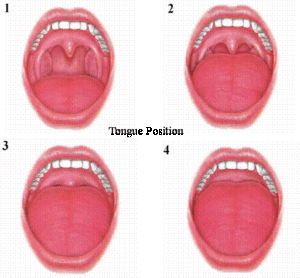
High Tongue Position
High Sitting Tongues Can sit up high and get in the way of Air attempting to pass through the mouth and down and into the Lungs.
Airway Obstructions in the Upper Jaw:
- A high Palate with a small roof
When the tongue thrusts it need to fit into the confines of the Palate. If the roof of the palate is high and small, the Tongue will once again be displaced back towards the airway. A high palate is also a sign of underdevelopment. Most cases of Jaw Under Development are caused by a Tied Tongue.
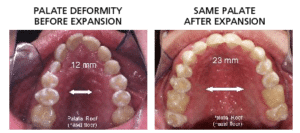
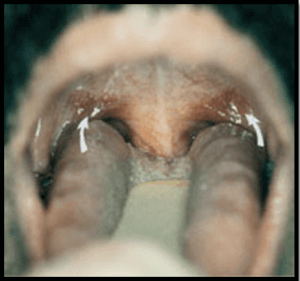
Long Soft Palate
The soft palate seals off the nasal passage ways during swallowing. If the soft palate is longer it will get in the way of air going from the nasal passageways to the throat. Obviously, having a Long Soft Palate will contribute to Obstructive Sleep Apnea because it creates and obstruction to ones ability to nose breathe. A long soft palate can also be the cause of snoring. The extra tissue is often “flappy” and becomes a noisy, fluttering valve during night time breathing.
In the above picture you see “arrows” the union of a high tongue position resting on a long soft palate. This could hardly be a worse situation.
Enlarged Uvula
The uvula is the dangly round shaped tissue that hangs down from the top of your throat. The Uvula works in conjunction with the soft palate to prevent food from entering the nasal passages. An large uvula can obstruct the nasal airway by getting in the way of air going between the nose and lungs. A large Uvula becomes a fluttering, noisy valve during night time breathing.
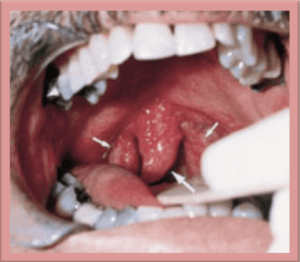
Enlarged Tonsils
When tonsils are large (arrows) they obstruct breathing or the passage of air between the lungs and the mouth and nasal passageways.
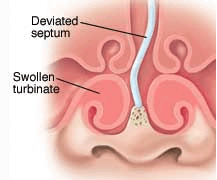
Deviated Septum
A deviated septum is when the cartilage in the middle of two nostrils is crooked. A deviated septum obstructs the proper flow of air through the nasal passage.
The main symptoms of a deviated septum are:
- difficult nose breathing
- Frequent Nasal Congestion, usually one side more obstructed and congested than the other
- Recurrent Sinus Infections
- Nose Bleeds
- Snoring
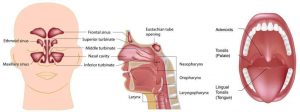
Enlarged Turbinates
Turbinates are small bones inside nasal passageways. When the turbinates become enlarged they obstruct the flow of air during nose breathing.
The main symptoms of enlarged turbinates are:
- Chronic stuffy nose
- Difficulty breathing through the nose (forcing you to breathe through your mouth)
- Snoring
Small Lower Jaw or Retrognathic Mandible:
When the mouth is small, especially the lower jaw, the teeth, tongue and in short all the tissues as listed above are back further in the mouth and the airway is small. Notice above in the first picture, the small lower jaw in the first profile picture and the larger lower jaw in the second picture. Naturally, there is more room for the tongue, teeth and all the soft tissues in the second profile picture. In the second picture notice how much further back the lower jaw is relative to the upper jaw. There is not depth to this mouth at all. The Tongue in this situation must be forced into the airway by the lack of space and the confines of the teeth.
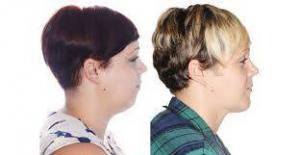
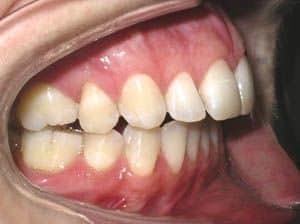
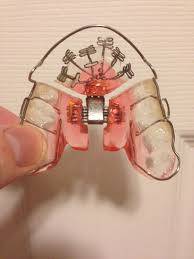
The DNA Appliance is the Best Sleep Dental Appliance. The DNA can re-develop an adult mouth to be wider and deeper with orthopedics. The DNA Sleep Apnea Dental Appliance can correct Airway Problems and Sleep Apnea.
The DNA Appliance will grow the jaws wider and deeper and it works for Adults. The DNA will literally grow the tongue and all the soft tissues in the mouth forward and out of the Airway. This is a great treatment for people with Obstructive Airway Issues. Using a DNA appliance to increase the size of the lower jaw can create more room for the tongue to fit down and into the lower jaw where it belongs.This will literally help the Tongue “duck down” in between the teeth where it belongs. When this happens the Tongue will be out of the way of air passing through the upper airway and down into the lungs. The DNA will pull the soft palate forward as the jaws grow forward. The DNA will grow the tonuge away from the Uvula, Tonsils and Soft Palate. The DNA will increase the diameter of the entire Airway by growing the jaws forward with all of the soft tissue.
